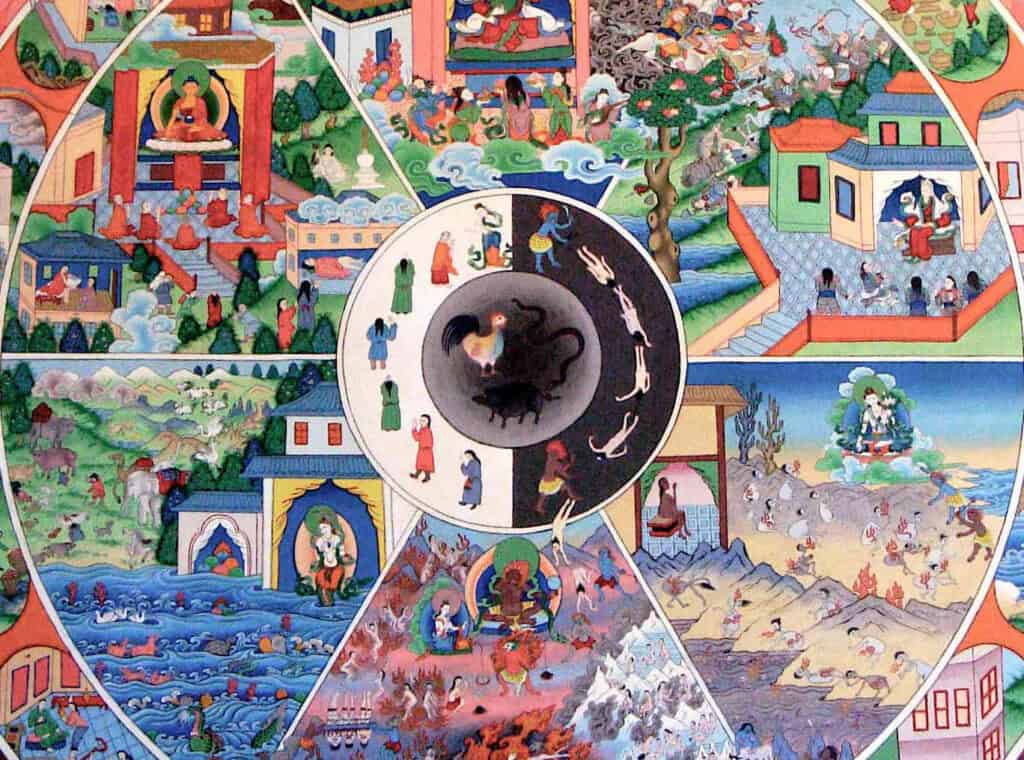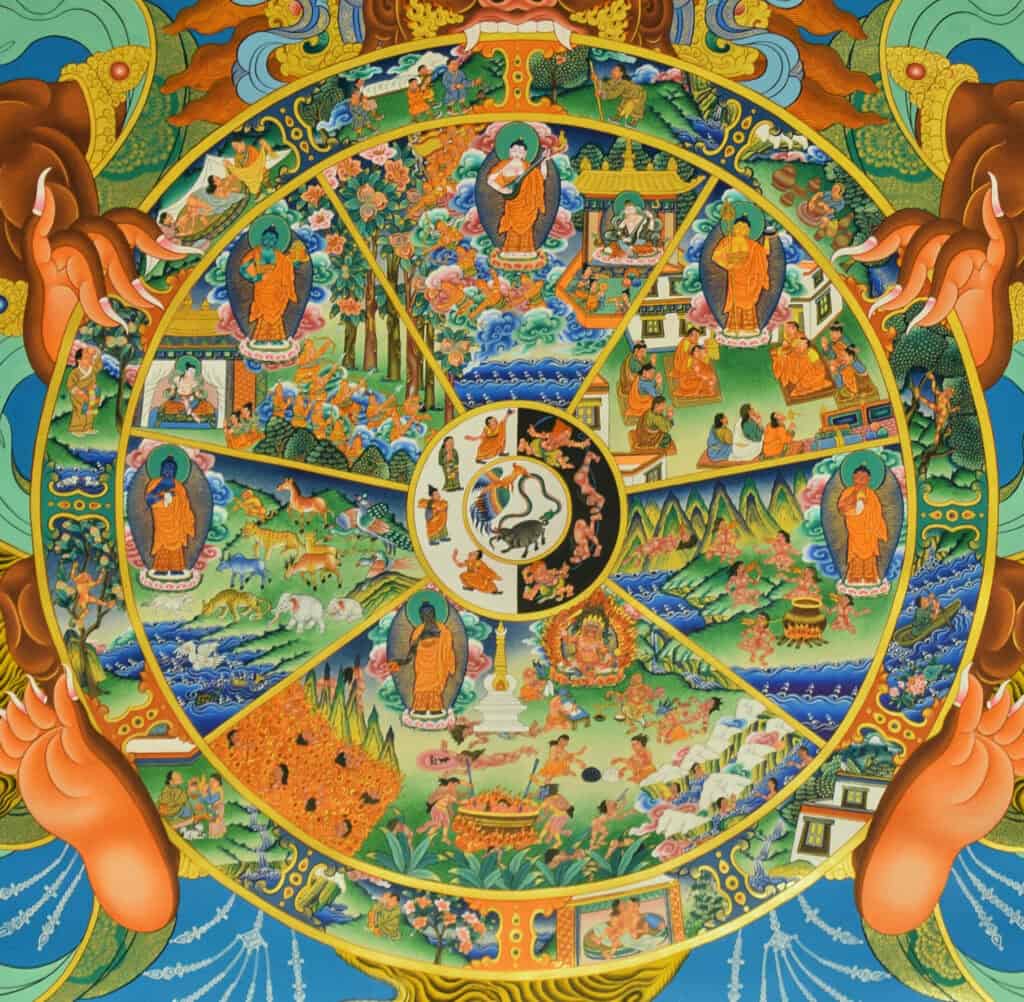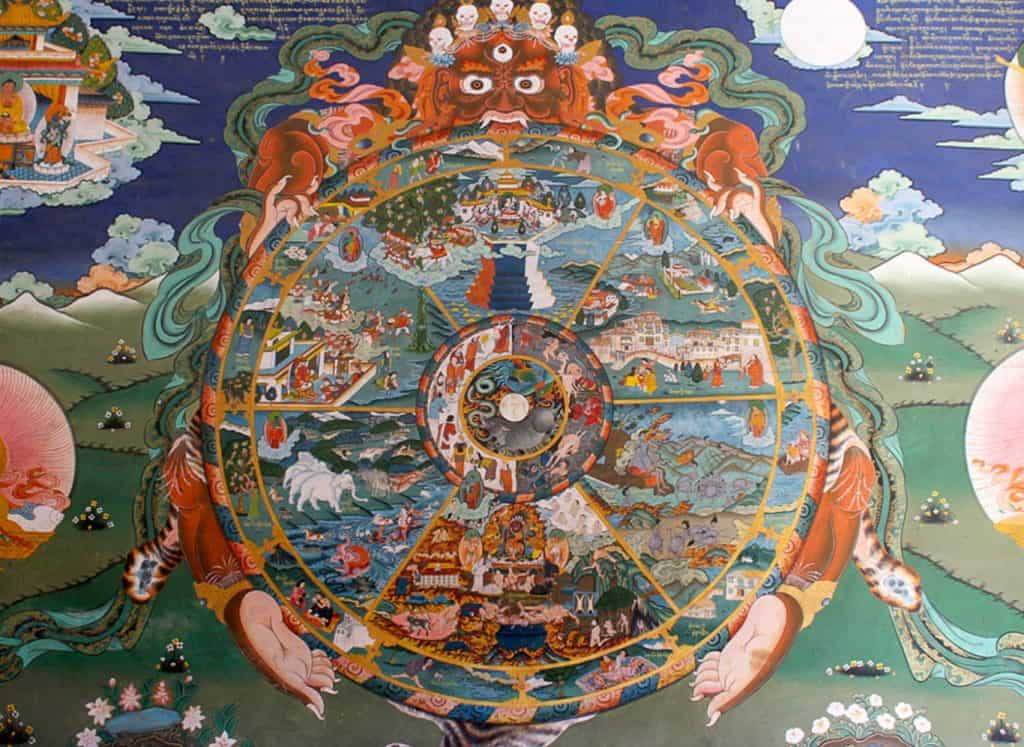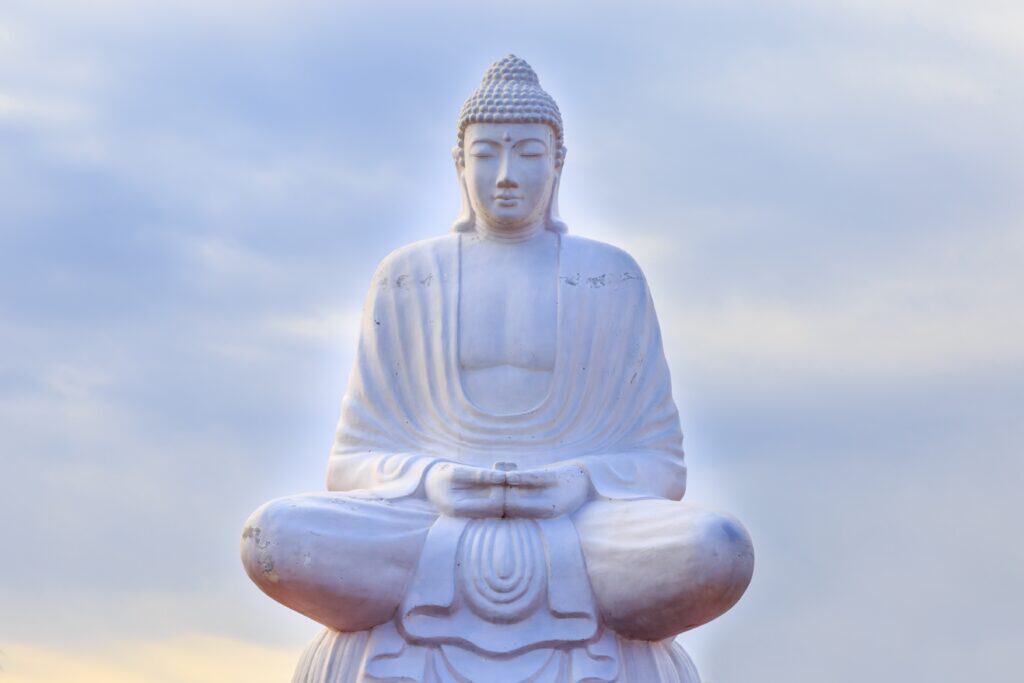Buddhism is a religion that has been around for over two and a half millennia. It is based on the teachings of Siddhartha Gautama, who is known as the Buddha. One of the central concepts in Buddhism is the idea of the two truths. This concept is fundamental to understanding the nature of reality and the path to enlightenment.
The two truths in Buddhism refer to the ultimate truth and the conventional truth. The ultimate truth is the ultimate reality of all things, while the conventional truth is the relative truth of our world. The ultimate truth is the true nature of existence, while the conventional truth is how things appear to us.
Understanding the two truths is essential to understanding the nature of reality and the path to enlightenment in Buddhism.
The Two Truths Doctrine
The Two Truths Doctrine is a fundamental concept in Buddhism that describes the nature of reality. According to this doctrine, there are two ways of understanding the world: conventional truth and ultimate truth. In this section, we will explore the nature of the Two Truths and their significance in Buddhist practice.
Nature of the Two Truths
The Two Truths are often described as two levels of reality, two ways of seeing the world. The conventional truth refers to how things appear to us in everyday life, while the ultimate truth refers to how things really are. The conventional truth is relative, dependent on language, concepts, and perception, while the ultimate truth is absolute, independent of such factors.
The Two Truths are not two separate realities but rather two ways of understanding the same reality. They are two aspects of the same thing, like two sides of a coin. Understanding the Two Truths is essential to understanding the nature of existence, the path to liberation, and the practice of Buddhism.
Conventional Truth
The conventional truth refers to how things appear to us in everyday life. It is the truth of worldly convention, the truth of phenomena as ordinary people perceive them. The conventional truth is relative, and dependent on language, concepts, and perception.
The conventional truth is not false or illusory but is not the ultimate truth. It is a provisional truth, a truth that is useful for everyday life but not for ultimate understanding. The conventional truth is like a map that helps us navigate the world, but it is not the territory itself.
Ultimate Truth
The ultimate truth refers to the way things really are, beyond language, concepts, and perception. It is the truth of emptiness, the truth of the absence of the inherent existence of all phenomena. The ultimate truth is absolute, independent of language, concepts, and perception.
The ultimate truth is not a separate reality or a mystical experience but rather the true nature of all phenomena. It is the truth of interdependence, the truth that all things are empty of inherent existence and exist only in relation to other things. The ultimate truth is the truth of the Middle Way, the path that avoids the extremes of eternalism and nihilism.
In conclusion, the Two Truths Doctrine is a fundamental concept in Buddhism that describes the nature of reality. Understanding the Two Truths is essential to understanding the nature of existence, the path to liberation, and the practice of Buddhism. The conventional truth is relative, dependent on language, concepts, and perception, while the ultimate truth is absolute, independent of such factors. The ultimate truth is the truth of emptiness, the truth of the absence of the inherent existence of all phenomena, and the truth of interdependence.
The Relationship Between the Two Truths
Buddhism teaches that there are two truths: the relative truth (saṃvṛti-satya) and the ultimate truth (paramārtha-satya). These two truths are not separate from each other but are interdependent and complementary. In this section, we will explore the relationship between the two truths.
The Middle Way
The relationship between the two truths can be understood through the Middle Way (Madhyamaka) philosophy developed by the Buddhist monk Nagarjuna. The Middle Way is the path of avoiding the extremes of nihilism and eternalism. It is the path of seeing things as they really are without falling into the trap of either denying their existence or giving them an absolute reality.
The Two Truths and Dependent Origination
The two truths are also closely related to the concept of dependent origination (pratītyasamutpāda). Dependent origination teaches that all phenomena arise in dependence upon other phenomena. The relative truth is the truth of dependent origination, while the ultimate truth is the truth of emptiness (śūnyatā), which is the absence of inherent existence.
The Two Truths and Karma
Karma is the law of cause and effect that governs all actions and their consequences. The two truths are related to karma in that the relative truth is the truth of conventional reality, where karma operates, while the ultimate truth is the truth of ultimate reality, where karma is ultimately empty.
In Mahayana Buddhism, the two truths are seen as complementary and interdependent. The relative truth is the truth of conventional reality, where we experience suffering and illusion. The ultimate truth is the truth of ultimate reality, where we can find liberation from suffering and illusion through realizing emptiness and attaining enlightenment (bodhi).
The two truths doctrine is a key concept in Buddhist philosophy and epistemology. It is a way of understanding the world and our place in it that can lead to the cure of suffering and the attainment of liberation. By studying the two truths and practicing the teachings of the Buddha, we can come to value the ultimate truth and realize the full potential of our lives.
The Two Truths in Practice
Buddhism teaches that the ultimate reality can be understood in two ways: the conventional truth (samvriti-satya) and the ultimate truth (paramartha-satya). The doctrine of the two truths is a central concept in Mahayana Buddhism and plays a significant role in Buddhist practice.
The Role of the Two Truths in Buddhist Practice
The two truths are used in Buddhist practice to help practitioners understand the nature of reality. The conventional truth refers to the relative world that we experience through our senses, while the ultimate truth refers to the absolute level of reality that transcends our senses. By understanding the two truths, practitioners can see through the illusions of the relative world and attain a deeper understanding of the ultimate reality.
The Two Truths and the Heart Sutra
The Heart Sutra is one of the most famous Buddhist texts that discusses the two truths. It teaches that the ultimate truth is emptiness (sunyata), meaning all phenomena are nonexistent and lack inherent existence. The Heart Sutra also teaches that the conventional truth is interdependent (pratitya-samutpada) and essenceless (anatman), which means that all phenomena are relative and lack a permanent self.
The Two Truths and Dependent Arising
Dependent arising (pratitya-samutpada) is another central concept in Buddhist philosophy that is closely related to the two truths. It teaches that all phenomena arise in dependence upon other phenomena and that there is no inherent existence or essence to any phenomena. By understanding dependent arising, practitioners can see through the illusions of reification and gain a deeper understanding of the ultimate reality.
In the Madhyamaka school of Buddhism, the two truths are used to explain the nature of reality and to help practitioners overcome their misunderstandings about the nature of existence. The Madhyamaka school teaches that the two truths are indivisible and that they are both necessary for a complete understanding of reality.
Conclusion
The doctrine of the two truths is a complex concept that is central to Buddhist philosophy and practice. By understanding the two truths, practitioners can gain a deeper understanding of the nature of reality and overcome their misunderstandings about the ultimate truth. The two truths are used in Buddhist practice to help practitioners see through the illusions of the relative world and attain a deeper understanding of the ultimate reality.








